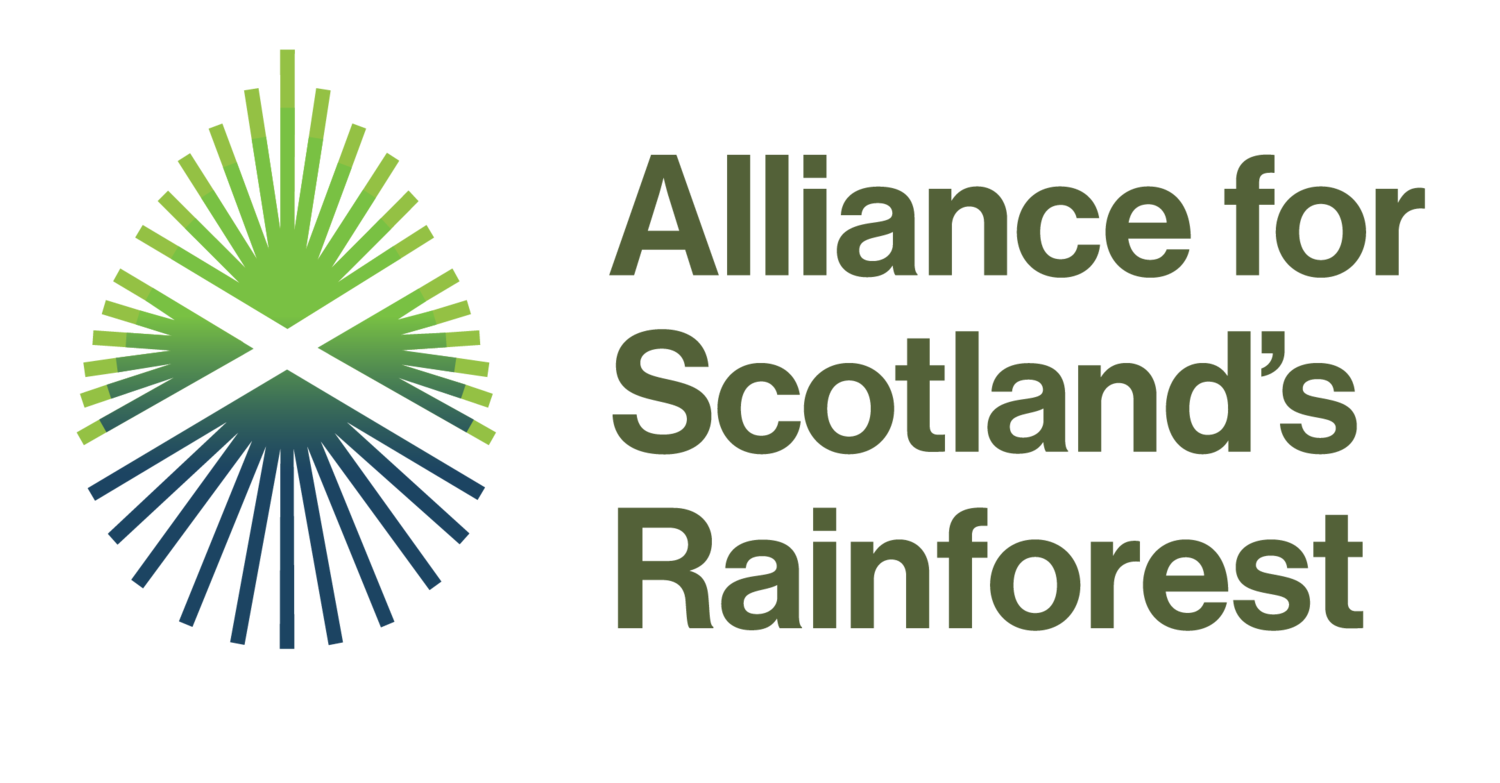Deer and other grazing animals
Impacts from inappropriate levels of grazing
Scotland’s rainforest depends on the right level of grazing to develop a varied woodland structure and to create spaces for internationally rare bryophytes and lichens. However, livestock, deer and other herbivore numbers in the landscape have been too high for too long to allow remnants of Scotland’s rainforest to regenerate and expand naturally.
Problems arise when young trees and shrubs get eaten before they get a chance to mature, so the temperate rainforest gradually becomes hollowed out, resulting in a simplified woodland structure. And when old trees die or fall, there is nothing to replace them.
Deer fencing is sometimes needed in response to this fundamental issue. However, the exclusion of grazing can cause problems, such as rare bryophytes and lichens on existing trees and rocks becoming overshaded by dense regeneration of saplings, or from being smothered by coarse vegetation on the woodland floor.
Fencing that results in dense regeneration and/or a coarse field-layer can also lead to negative impacts on associated open ground habitats, such as species-rich flushes and woodland glades – with implications for other wildlife, such as butterflies. Fences are also very expensive to erect and will fail to protect tree regeneration if they are not maintained.
What management is needed to combat this threat?
Effective grazing/browsing control at scale will always require collaboration and coordination across landowners and land managers.
Seek advice from specialists and learn from practitioners and organisations who have already collaborated to ensure appropriate grazing levels and minimise potential negative impacts. The ASR can suggest who to approach and what grant schemes might be available.
The Woodland Herbivore Impact Assessment (WHIA) is the standard method for establishing the level of herbivore impact, and is a useful tool for monitoring progress and adapting management. The section on biodiversity objectives in the Woodland Grazing Toolbox will help you think about what your objectives might be, and to understand what level of herbivore impacts would be appropriate for your woodland.
Controlling deer at the landscape scale will require cooperation with neighbouring landowners. More information can be found at Deer management: general guidance | NatureScot.
Reducing livestock numbers or temporarily excluding livestock from woodland areas will also be required at some sites.
Once deer impacts have been reduced and significant recovery is apparent there are likely to be opportunities for livestock grazing at appropriate levels. This should be set to allow for diverse tree and shrub regeneration whilst also helping to maintain woodland structural diversity, including the maintenance of glades. In situations where grazing by livestock is impractical, deer browsing might be allowed to increase temporarily but only where monitoring of critical biodiversity indicates the need for an intervention and such an increase would be compatible with other woodland management objectives.
Having a grazing system in place that allows for flexibility will be important so that livestock can be quickly moved if necessary. This adaptive management approach might be achieved by using cattle with no-fence collars to ensure that the right amount of grazing occurs where it is needed. Whatever system is used, the level of grazing should be one that achieves the desired impact and the time this takes will vary depending on various site-specific factors.
Frequent monitoring will be necessary to make sure that the desired objectives are being achieved and potential negative impacts effectively controlled, by modifying management as required (refer to Plantlife’s Rapid Rainforest Assessment and survey form). Both WHIA and habitat condition monitoring are appropriate but more specialist monitoring will be needed if high quality ancient semi-natural woodland is affected. Ensure the grazier knows that the land management objective is to restore Scotland’s rainforest and that this may have implications for the grazier’s own objective.
Where there is no possibility of achieving low enough numbers of deer to permit natural regeneration through culling, then it might be necessary to rely on fencing. The deer fence should never be seen as the end-game and ongoing management will be necessary to achieve a woodland that is structurally and age diverse. Habitat condition monitoring will be essential to make sure that the developing woodland is on course to becoming good habitat and existing biodiversity interest is not being threatened. This should inform adaptive management (that might involve an appropriate level of low impact grazing) before it gets to a stage where more intensive management interventions are required.
You are strongly advised to seek specialist advice, at the planning stage, from a lichenologist and/or bryologist in situations where ancient woodland is being considered for inclusion within a deer fence. The specialist can advise on how best you can reduce the impact on internationally important bryophytes and lichens that might otherwise be lost.



